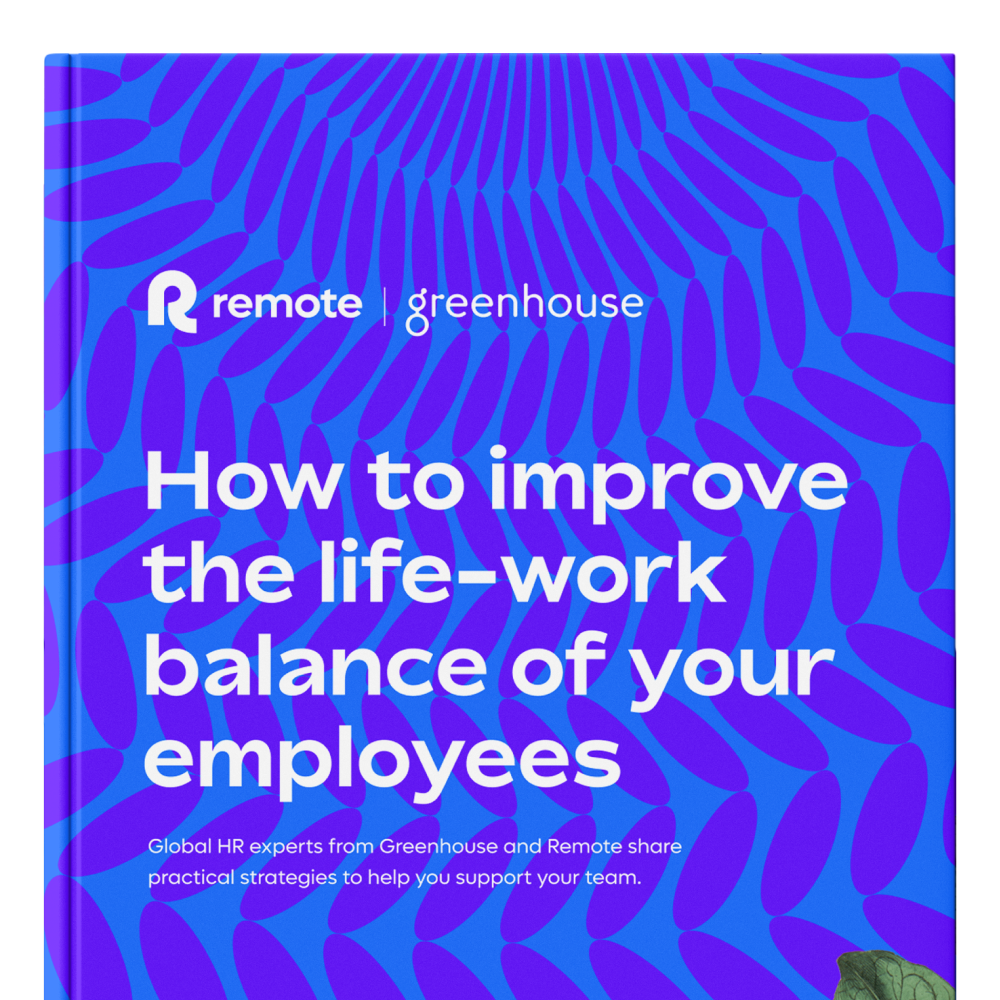
Product Updates — 7 min

Remote & Async Work — 8 min
Are your remote employees struggling to stop their work from seeping beyond the bounds of business hours? And is your company feeling the productivity loss as a result?
Although the remote movement originally sold the idea that remote working improves work-life balance, more and more full-time employees at hybrid and remote companies are reporting increasing stress levels.
With impromptu virtual meetings at all times of day, the need for extra hours to complete projects to perfection, and the expectation that employees should be available at all hours, remote workers are approaching burnout — and fast.
This article is for business owners, managers, or team leaders looking to prevent overworking and help their remote team members maintain healthy work-life balances.
A 2021 survey from ADP found that remote employees work an average of 9.4 unpaid hours of overtime every week.
Most overworking stems from having a poor work-life balance, which is the inability to separate your professional life from your private life. Flexible hours and a lack of physical barriers make it difficult to create the mental separations necessary to maintain productivity while looking after your mental health and physical health.
When you work in an office, you can alter your environment and behavior to facilitate work-life balance, such as leaving your laptop at work or getting to your car by 5:30 p.m. Your surroundings provide a crutch to help you compartmentalize different parts of your life.
If you move your office to a spare bedroom, though, the dynamic changes. The removal of physical boundaries means your team members are rarely more than a few steps away from their desks at all hours of the day.
Remote employees, managers, and founders often struggle to draw distinctions between their work lives and their home lives, and it’s because finding a work-life balance while working from home requires a different set of skills and habits than it does when in the office.
Learn practical insights from global HR experts at Greenhouse and Remote to help you support your team's life-work balance

Remote work culture can end up championing overworking, with little to no boundaries between work and personal life. In a position of leadership, you have the power to shift the workplace culture to something healthy and sustainable without sacrificing productivity.
Use the following work-life balance tips to help your remote employees thrive:
A healthy work-life balance in remote teams starts with leaders who don’t work themselves to the bone on a daily basis. While those in executive positions often need to work long hours, leaders can’t allow their employees to think overworking is the norm.
Overwork doesn’t only encourage unhealthy work-life habits, but it also doesn’t do much good for the company. Long-standing research shows that productivity levels plummet after 55 hours of work in a week. A person who works 56 hours gets the same amount done, on average, as a person who works 70 hours. Humans can only stay in the “on” position for so long before they need to recharge.
As well as not improving productivity, working more than 55 hours each week has been found to increase your risk of stroke by 35% and your risk of dying from heart disease by 17%.
Unlimited PTO policies should make it easy for people to take as much time off as they need, but in environments where leaders never take time off, employees don't, either. Executives and managers should make it public when they take time off, and they should disconnect fully from communication tools during those periods of rest.
When employees see you taking breaks fully, they receive implicit permission to follow your example without worrying about being thought of as lazy or undedicated.
People like to do good work. Besides a few rare cases, no one sits at their desk and thinks, “How can I do my job as terribly as possible today?” At physical offices, project deadlines often coincide with the end of the day. You work on something, ship it before you leave, then start on something new in the morning.
Working remotely makes it difficult for some workers to let go of projects that could always be just a little bit better. Copywriters go back and re-write sentences for hours; software developers tweak their code to make a hundred small improvements. The temptation to do well is ever-present, and while all companies love employees who take initiative, too much focus on perfection can be harmful.
This is why many self-help articles related to remote work recommend that employees create physical distinctions between their workspaces and living spaces. If you have to make a conscious decision to return to work, you’re less likely to do so.
More than that, remote workers must practice self-awareness. Perfection is a myth, and anyone who chases it will find the workday getting longer and longer.
If you’re looking for ways to improve work-life balance for your employees, the best place to look for ideas is from employees themselves. You can curate ideas and opinions on existing systems, potential upgrades, or employee requests so that you have a well-rounded understanding of the employee experience.
You can collect employee feedback through the following channels:
Surveys to answer exact questions your business has
Emails to gather focused and individual feedback
Feedback forums to foster communication and collaborative thinking
Polls to understand employees’ priorities and preferences
Interviews to gather direct feedback and create connections between you and your employees
When your employees feel heard, they feel safe working for your company. They’re not on guard and waiting to be taken advantage of — they trust you to look after their physical and mental well-being.
According to Harvard Business Review, an essential part of reducing tension in remote and hybrid teams is to talk. As a leader, you want to create an organizational culture of respect. A huge part of that process is giving your employees chances to speak, listening to them, and implementing their suggestions wherever possible.
A healthy work-life balance for remote teams starts when people recognize their autonomy and take control of their own schedules.
A boss who insists employees regularly make themselves available outside work hours is a bad boss. An employee who never unplugs is a bad employee. Being dedicated to a fault does nothing but cap their potential. One study found that work-home interference decreases employee satisfaction and engagement while increasing burnout rates and amplifying turnover intentions.
As a team leader, it’s your responsibility to help your employees build and maintain boundaries between work and their personal lives.
Every pop-up notification prevents employees from reaching a flow state and knocking out their work efficiently and promptly. Your inbox, unread messages, and job will still be there if you step away to get something done or take a break. In fact, these moments of separation are what allow you to bring your best self to work and take that same energy home with you (even if home is only a step away).
At Remote, we encourage team members to take frequent breaks, sign out of messaging platforms when they need to focus, and respect the boundaries people set for themselves.
We trust one another to take care of our workloads, and as a result, we are able to operate across multiple time zones without threatening the work-life balance of the individuals within the company.
Encourage your employees to set break reminders to stand up and stretch throughout the workday. Even a five-minute break can make a huge difference in the way an employee feels in their body and mind.
Remote work is the present and future of both productivity and healthy living. A person working remotely can travel, take care of household tasks, save money, and enjoy freedom and flexibility that would be impossible in traditional working environments.
As more companies move to a permanent remote model, leaders should be more deliberate in how they create and maintain healthy remote work-life balance.
Achieving a healthy work-life balance while working from home is much like creating happiness. No one remains indefinitely enlightened after reaching a perfect state of balance and harmony — it requires consistent effort. But with good habits, strong boundaries, and a shift in your mindset, you can enjoy all the benefits of remote work with none of the anxiety.
For more helpful insights that you can use to support your remote team, check out Remote’s 2023 Workforce Report.
Start onboarding employees and contractors in minutes with Remote, G2’s top-ranked multi-country payroll software.

Subscribe to receive the latest
Remote blog posts and updates in your inbox.

Product Updates — 7 min

Global Payroll — 2 min

Minimum Wage & Compensation — 7 min

Newsroom — 5 min